Nestor Rodriguez, Professor, Department of Sociology, The University of Texas at Austin, Author, When States Kill: Latin America, the U.S., and Technologies of Terror
Cecilia Menjivar, Professor of Sociology, School of Social and Family Dynamics, Arizona State University, Author, Fragmented Ties: Salvadoran Immigrant Networks in America
Patricia Zavella, Professor and Chair, Latin American and Latino Studies, University of California-Santa Cruz, Author, Women and Migration in the US-Mexico Borderlands
THE MAKING OF THE FILM
 How did you meet your interview subjects?
How did you meet your interview subjects?We met our subjects in many different ways’ mostly in immigration detention centers, by the railroad tracks, and other locations where migrants converged to travel north. We felt it was extremely important to find families of children who had died migrating in the Sonora Desert, to make two points: that children are in grave danger when they migrate through Mexico, and that this practice is an urgent child welfare issue.
What aspect of the children’s journey surprised/shocked you most? Were you surprised by their age, conditions, and circumstances?
After researching this story for so long, I was not surprised or shocked by the circumstances of child migrants’ lives. However, I was taken by their utter commitment to pursing their dreams of reaching the United States. I did hold my breath when watching our young subjects hopping the trains. Sometimes, they treated the train like a playground; jumping from boxcar to boxcar, jumping off the train to run alongside it, only to jump back on again – just for laughs. They really did not have a “healthy fear” of freight trains as a dangerous means of travel.
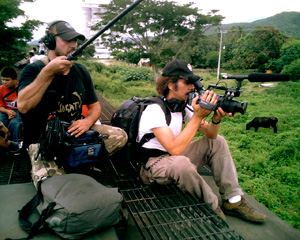 What kind of impact did your presence have on the journey?
What kind of impact did your presence have on the journey?We wanted our impact to be minimal. As observers, our job was to document their lives while traveling with them. However, since our subjects were children, we made it a point to remind them how dangerous the road ahead could be, and we offered to help connect them with migration officials if they wanted to go home.
The realm we were filming in was full of smugglers, gang members, and corrupt officials. As a crew, we were always mindful of how our child subjects could potentially be put in danger by the presence of our cameras and ourselves. On several occasions, we decided not to travel with children when threats towards us were made.
How long was the filming? Were there gaps in between shoots? How did you track your subjects?
This film took six years to complete, and there where many gaps in between shoots. I first pitched this film idea in early 2003, and received a development grant from the Sundance Documentary Fund. In November 2004, I traveled to Mexico to research, scout locations, film child subjects, and edit a trailer for fundraising purposes. While filming in 2004, I was struck by the huge multitudes of migrants that had crossed over from Guatemala into Tapachula, Mexico, and were waiting on the tracks to hop freight trains going north. This fact made it very easy for us to meet potential subjects. Unfortunately, the development money ran out and I was forced to return to Mexico City and cut a trailer with the footage I had.
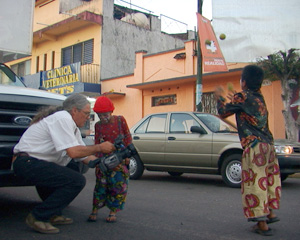
Shortly after HBO came on board, I decided to search for an executive producer. That same year, Lianne Halfon, Russell Smith and John Malkovich of Mr. Mudd stepped in. Fortunately for us, Mr. Mudd agreed to executive produce, and while they worked tirelessly to find investors, filming was halted for a year and a half. Because of Mr. Mudd’s involvement, I was able to return to Mexico to complete principal filming. In 2006, investors were found, and I also received a Fulbright Fellowship to Mexico for Filmmaking. This 11-and-a-half-month fellowship began in the fall of 2006, and helped me greatly by providing: 1) a stipend that covered my living expenses, and 2) the most important factor – a work visa, which granted me the extended time in Mexico to complete filming.
Because there were many delays in filming, most of the time we would be forced to begin again with new child subjects. Also, after Hurricane Stan struck in 2005, the landscape in Tapachula, Mexico irrevocably changed. This hurricane destroyed infrastructure, train tracks, and wiped out the train bridge that trains took north. Therefore the trains stopped running and migrants were forced to find other dangerous routes to cross. Partial funding arrived in January 2007, but by the time we returned to film, it was much harder to connect with potential subjects. Our shooting schedule lasted three weeks when bureaucratic and contractual delays forced myself, and my crew to suspend filming and leave the field again.
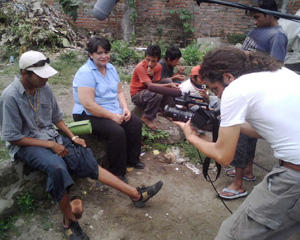
Six months later, in July 2007, filming continued, and we had to find new child subjects. Also, the train company that operated in southern Mexico officially folded. We did not realize it at the time, but the train we took with our new child subjects was the last one that went north. Filming halted once again for three weeks, but we were able to follow up with our child subjects in mid-August through September, and again in November 2007.
Your crew has incredible access within the governmental agencies in Mexico. How were you able to get clearance?
Gaining access and permissions from governmental officials and various agencies took many months to obtain. I was very fortunate in meeting Alejandra Liceaga, the film’s production manager. She was instrumental in making those initial contacts, building support, and pursuing the permissions until we finally received them.
I must say that we received lots of support and good will from Central American and Mexican officials, who really believed in the story we were trying to tell, and so the accesses were granted.
What is your intended impact for the film?
To make the public aware of the realities of child migration, and to provide a greater understanding of not only how but also why children are so driven to make this journey alone. Many child migrants are trying to find relatives, so one challenge is how to provide laws that migrating children and their parents can be reunified safely. Lastly, and very hopefully, that this film will serve as a catalyst to promote a dialogue that leads to creating humane, immigration policy reform in the United States.
REVIEWS
"Tremendous - eye opening filmmaking."
Erik Price, Esquire
"Tackles the almost unfathomably complex immigration issue by zooming in on some of its youngest victims."
David Hinckley, The New York Daily News
"Taps into the same concept and themes of Sin Nombre, except it's all real and it's all heartbreaking to watch...A truly captivating documentary, that doesn't carry an agenda...it brings you to the front lines of a war we know very little about and turns the audience member into an expert. But, like with most documentaries, what becomes of that new chunk of brutal information is entirely up to you. My advice: Turn to the person next to you and tell them there's a great film they need to see."
Erik Davis, Cinematical
"An unflinching look at the world of Central American child migrants."
The Wall Street Journal
"Dramatically and pictorially pulls its weight...a reverse-angle on the many documentaries about decamped mothers or fathers who toil in New York or Los Angeles to send cash back to families from whom they are exiled."
Ronnie Scheib, Variety
"Despite the subject matter -- terrified children, many who haven't seen their families in years -- Cammisa never gets sentimental, and instead lets those closest to the subject do the talking."
New York Magazine
"Without resorting to any background narration, Which Way Home raises questions about cross-border immigration policies and the macro-economic causes that propel people from struggling countries to stream into developed ones."
Reed Johnson, Los Angeles Times
"Some of them make it. Some of them don't. But all of them remind us what it truly means to be brave and literally chase after your dreams."
Latina Magazine
"Exceptionally effective filmmaking."
Jennifer Merin, About.com
"What comes out of the film is a message of hope, as there needs to be a serious discussion about immigration policy by both sides of the border. Having a situation where so many children are risking their lives to try and come here is pretty unacceptable. Thankfully, Which Way Home is a film that informs and inspires - as the first step in creating real change is to give people the knowledge of what is actually happening - and that is an incredibly hopeful thing."
Gina Telaroli, TakePart.com
"Produces a powerful testimony of how absolute poverty hurls even young children into the clandestine migrant stream. It is the best film made of the undocumented migration of Central Americans into the United States."
Nestor Rodriguez, Professor, Department of Sociology, The University of Texas at Austin, Author, When States Kill: Latin America, the U.S., and Technologies of Terror
"It's an amazing film. As someone who teaches immigration courses but also does research precisely on the issue of family separation and the migration of children, I have seen many films about how migrants reach the United States. But I've never seen anything like Which Way Home. It's easily the best documentary of its kind I've seen... The film does not dehumanize or essentialize these children. Rather, the humane and sensitive lens seems to aim to present a realistic picture that can inform many about the human drama that these young immigrants and their families live...But we don't only get to hear the children's stories in their own voices, we also learn their parents' views, and get a good glimpse of the context within which the kids live and within which they make decisions to migrate...A remarkably well done documentary that will inform many students of immigration and spark important debates."
Cecilia Menjivar, Professor of Sociology, School of Social and Family Dynamics, Arizona State University, Author, Fragmented Ties: Salvadoran Immigrant Networks in America
"Heartbreaking... These stories illustrate how U.S. immigration and border enforcement policies affect families thousands of miles away who have no recourse but to migrate without documents so as to find opportunities for work. This documentary is an invaluable educational tool for all ages."
Patricia Zavella, Professor and Chair, Latin American and Latino Studies, University of California-Santa Cruz, Author, Women and Migration in the US-Mexico Borderlands



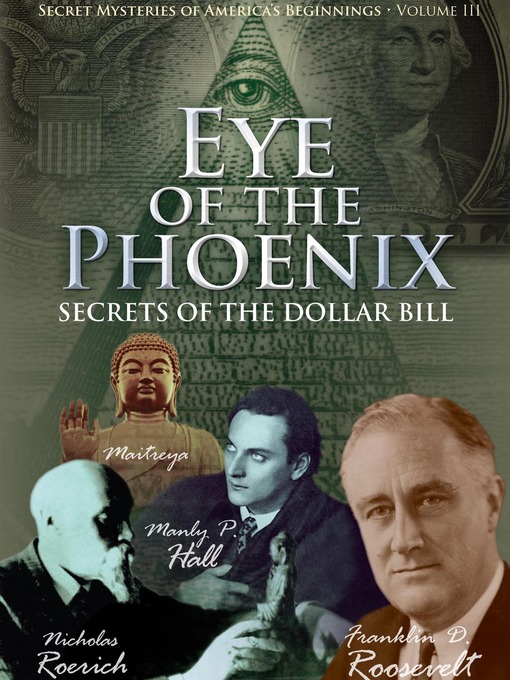
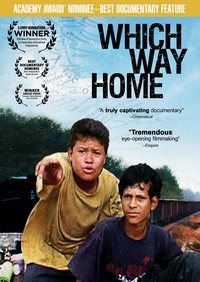
 How did you meet your interview subjects?
How did you meet your interview subjects? What kind of impact did your presence have on the journey?
What kind of impact did your presence have on the journey? Shortly after HBO came on board, I decided to search for an executive producer. That same year, Lianne Halfon, Russell Smith and John Malkovich of Mr. Mudd stepped in. Fortunately for us, Mr. Mudd agreed to executive produce, and while they worked tirelessly to find investors, filming was halted for a year and a half. Because of Mr. Mudd’s involvement, I was able to return to Mexico to complete principal filming. In 2006, investors were found, and I also received a Fulbright Fellowship to Mexico for Filmmaking. This 11-and-a-half-month fellowship began in the fall of 2006, and helped me greatly by providing: 1) a stipend that covered my living expenses, and 2) the most important factor – a work visa, which granted me the extended time in Mexico to complete filming.
Shortly after HBO came on board, I decided to search for an executive producer. That same year, Lianne Halfon, Russell Smith and John Malkovich of Mr. Mudd stepped in. Fortunately for us, Mr. Mudd agreed to executive produce, and while they worked tirelessly to find investors, filming was halted for a year and a half. Because of Mr. Mudd’s involvement, I was able to return to Mexico to complete principal filming. In 2006, investors were found, and I also received a Fulbright Fellowship to Mexico for Filmmaking. This 11-and-a-half-month fellowship began in the fall of 2006, and helped me greatly by providing: 1) a stipend that covered my living expenses, and 2) the most important factor – a work visa, which granted me the extended time in Mexico to complete filming. Six months later, in July 2007, filming continued, and we had to find new child subjects. Also, the train company that operated in southern Mexico officially folded. We did not realize it at the time, but the train we took with our new child subjects was the last one that went north. Filming halted once again for three weeks, but we were able to follow up with our child subjects in mid-August through September, and again in November 2007.
Six months later, in July 2007, filming continued, and we had to find new child subjects. Also, the train company that operated in southern Mexico officially folded. We did not realize it at the time, but the train we took with our new child subjects was the last one that went north. Filming halted once again for three weeks, but we were able to follow up with our child subjects in mid-August through September, and again in November 2007.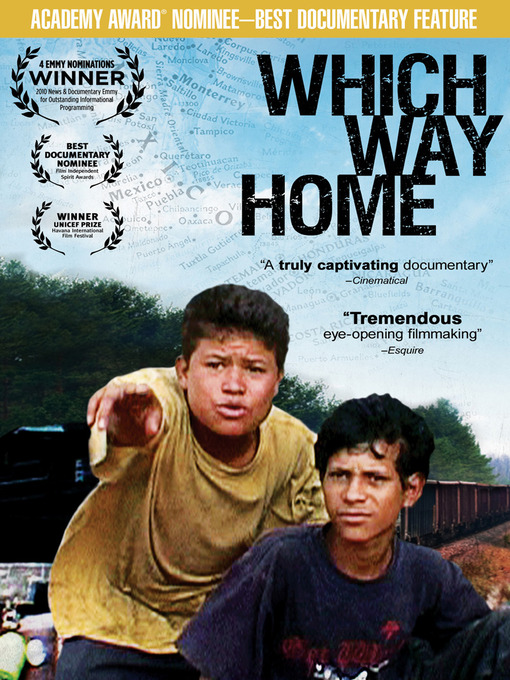
True that man cannot control the elements because he cannot control himself. So, does man let the elements control him instead? If I understand humanity very well, I think I would be right to state that, we will do anything (given the opportunity) to make names for ourselves, whether or not it is beneficial to our fellow man.
Whatever vision Mr Hall had, great as it might have been, isn't simply lost. It wasn't his in the first place. He was merely part of the work force even though he stood to benefit from whatever contributions he made. The real people behind the vision are in obscurity and even they are also just part of the workforce.
I do not deny that it is possible to become one family, but given the state of affairs and also looking at the history of mankind, I think I can confidently say, becoming one family is just a pipe dream, a blind alley belief, achieving the "one family dream" can only be achieved by suppressing others, giving up the freedoms, choices and rights that we're already losing. Now what kind of family would that be?
There are greater forces at work than we can imagine or wish to believe. The only thing we have as humans is hope and the choices we make.
Much has been written on the Internet about the number thirteen and its relationship to the secrets of the Dollar Bill. A lot of it is Interesting but some of it may take you in the wrong direction! Here is some new information. There are five numbers that repeat themselves with noticeable regularity. They are: 3, 6, 9, 12 and 13. The first four (quarters) are all linear multipliers of three (3) and represent the geometric thirds and the original Trinity. (An important concept in deep Masonic teachings; hence the title - a 33 degree Mason - the highest rank.)
They are also the proportions of the "Golden Mean" which was so important to Da Vinci "The Real Da Vinci Code" and the Fibonacci sequence and considered the "Natural Miracle of proportions". One source claims that this is part of the Great Secret that is only usually revealed to a "32 degree Sublime Prince of the Royal Secret" in preparation for his ascent to the position of 33 degrees.) They are also the parametres of the parallelogram grid used to design all else on the Dollar Bill. Why? Take any number in the universe and divide it by three (3) and it will repeat to Infinity. This is believed to be the Masonic interpretation of the Divine. Proof of the existence of the "Great Architect". So why was 13 so important? It dates back to the existence of two organisations - The Knights Templar and the Knights Hospitaller. Both were Christian Warrior Orders established to protect pilgrims to Jerusalem.
The Hospitallars stayed "Pious" and today are commonly known as St. John's Ambulance the Knights Templar introduced the first promissory currency and so became "God's Bankers". The word "Banker" originally meant "Holder of Valuables" Their power grew to such an extent that they potentially threatened both the Roman Catholic Pope Clement V and the French King Philip IV. On Friday the "13th" of October 1307 a secret order issued by the Pope to destroy the Order was carried out with vicious efficiency using the excuse of Heresy and Demon worship. Most of the Templar wealth was confiscated but a significant proportion was saved.
There is another powerful and distinctive geometric shape that can be found hidden in the mesh of the One Dollar Bill. If you look at the top left hand corner at the pattern behind the letters "One" and the large numeral you can see the shape of a Maltese Cross. This is the symbol of the Knights of Malta otherwise known as the Knights Hospitallars. Their full name was (is) The Sovereign Military Hospitaller Order of St. John of Jerusalem of Rhodes and of Malta. It is worth noting that when the Knights Templar were betrayed and their order dissolved in 1312 much of their wealth found its way to the Knights of Malta. It is very worth noting that the Order's Island fortress and home of Malta was captured by Napoleon in 1798 and many of the Hospitallar financiers fled to the newly independent country of America.
THE SPIDER, OWL, WEB AND WHAT SKULL?
This is one of the most commonly known "secrets" of the Dollar Bill. Hidden in the top left curve of the shield shape that surrounds the number one is a tiny deviation from the geometric web. This shape is called the spider or sometimes the Owl. It certainly does not appear to be an accident of design but a deliberate modification of the underlying web or mesh pattern
If you then examine the matching number one on the opposite side a simulation o a spider' web becomes clear. Neither the "Spider" nor the "Web" are perfect representations. This may be that to make them so would have revealed them too easily when the Bill was first being designed.
It is also said that if you rotate the image it becomes the sign of Piracy - The skull and cross bones. The more we tried to enhance the image the less it looked correct. Still, you decide for yourselves
SHIVA - THE CREATOR & 33 DEGREE GEOMETRIC PRECISION
It has long been known that USA banknotes are designed using sophisticated geometric patterns based on powerful ancient symbols. We have so much proof of this that it is no longer in any doubt. (We have a whole new and very detailed section about this coming soon.)
It should not be surprising that extreme close-up photographic examination of the banknote can reveal strange secrets. It's part of the "Magic" of the Dollar. This is the Shiva Secrets. At the base of the One Dollar Bill and on both sides the background web of lines and loops form a distinctive image of the Hindu God Shiva. Hindu beliefs are less structured and have variations in their teachings. Shiva is often described as the Supreme God and sometimes as Shiva the Destroyer or Transformer. The pictures to the right clearly demonstrate the point.
http://www.aquiziam.com/portfolio/problems-with-atlantis/
Secrets of the Dollar
Home » Interactive Index » MYSTERIES » Secrets of the Dollar
Secrets of the Dollar
9/11 WORLD TRADE CENTRE
Secrets of the Dollar: Prophecy of doom or an incitement to terrorism?
CROSS HAIRS & THE ENTERED APPRENTICE
Secrets of the Dollar
THE RECURRENCE OF 13
Secrets of the Dollar